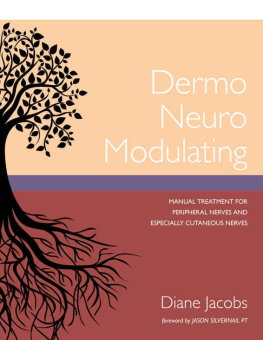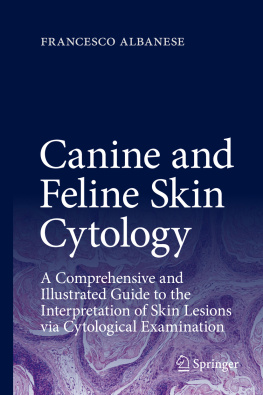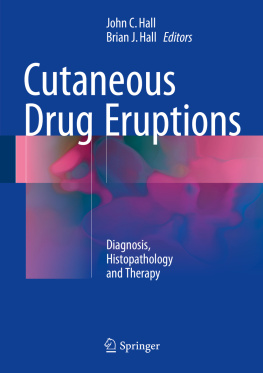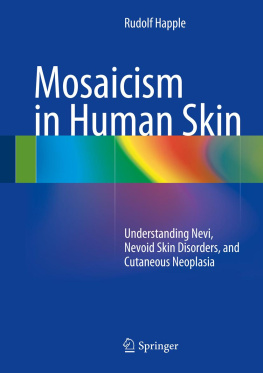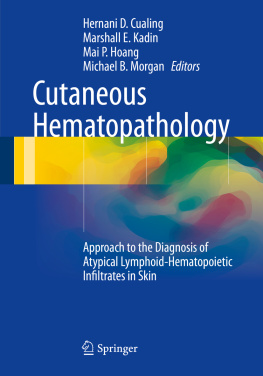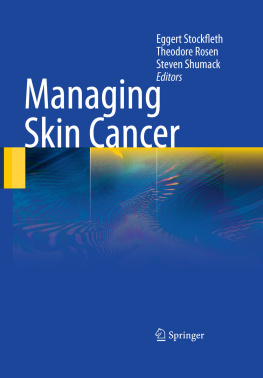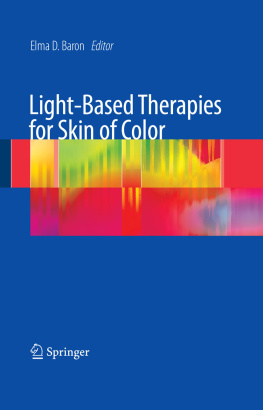Contents
Foreword
Its a great pleasure to introduce you to this wonderful book. In the busy world of medicine, in a crowded field of systems, approaches, copyrighted tools and techniques in physical medicine and rehabilitation, Diane Jacobs developed Dermoneuromodulating, or DNM. In the constantly-shifting landscape of the marketing of medicine, she built this approach from the ground up to be the opposite of the kind of slickly-marketed, money-focused commodity that we so often see. It turns out that the things that make DNM so different and so valuable are the some of the same things that make Diane so different and so valued by her professional colleagues and friends.
Diane is an autodidact, and this makes DNM accessible. Realizing some time ago that you didnt need a PhD to research and read and understand things you cared about, she taught herself neuroscience and pain mechanisms at a time when the field was rapidly evolving (in truth, it still is). She remains one of the most-informed and well-read people that I know on these topics. She did this work so she could bring this form of treatment to as many people as possible not just medical practitioners such as physical therapists and physicians, but massage therapists, chiropractors, Rolfers, Feldenkrais practitioners, anyone who could use a hands-on approach to help others. Diane knows more about touch sensation, perception, and pain neuroscience than almost anyone else I know - and I know a lot of researchers in these areas. She learned it all the old-fashioned way - by reading, thinking, and making connections between things the way no one else has.
Diane is humble, so DNM doesnt make lofty claims of success with a flashy marketing campaign. In fact, you might find the understated tone of the manual a nice contrast with the over-the-top approaches of other systems. No miracle stories, no multiple levels of certification, no saving of the good material for the advanced course, just a consistent set of principles based on the science, her experience in manual therapy, and an honest attempt to meld the two responsibly and treat patients gently.
Diane cares about making her practice defensible with science, so DNMs mechanistic explanations are entirely consistent with neuroscience. Diane Jacobs is the anti-guru. I have seen her present her ideas publicly in online forums for the last 12 years, taking criticism from anyone to test her assumptions, review her knowledge of the relevant basic science, and expose any reasoning errors she may have made. She has accepted critical feedback from world-famous neuroscientists as well as anonymous forum participants. Shes been wrong sometimes, right most of the time, and almost always gracious and thoughtful in her interactions. I have seen her accept corrections on her reasoning from experts with humility and grace. Ive also seen her take the time to explain herself to the most unreasonable forum troll shes changed many minds over the years with her persistence and her willingness to think out loud and subject her ideas to scrutiny.
She accepted early teaching opportunities with reluctance, initially requiring several rounds of encouragement behind the closed doors of the SomaSimple web forums moderator section. I think at first she honestly couldnt see why people would want to hear her speak. She wasnt a famous researcher with a PhD, she hadnt published randomized trials, she wasnt advertising her course on the pages of therapy journals. But its for all those reasons that we wanted to hear her. When we saw Diane stand up and speak, I think many of us saw a little of ourselves. We saw an earnest and caring clinician trying to pull together a defensible practice of care with low-cost, low-risk, noninvasive care. Without fancy gadgets, expensive tools, or thousand-dollar certifications. With just two hands, a grasp of the science, a commitment to gentle treatment, and an honest, unpretentious caring for patients. If that kind of practice appeals to you, I think youll like what you find here. I hope you also appreciate what Diane has poured 15 years of effort and time into and spent countless hours of reading to build for all of us. What a true gift you are about to open. Hurry up and get to it.
Jason Silvernail DPT, DSc, FAAOMPT
Northern Virginia, USA
2016
Preface
I would like to acknowledge all those who supported this effort, especially Bas Asselbergs for edits, Bruce Schonfeld for advice on structure, Jason Silvernail for his gracious foreword, and Sandy Hilton for her bluntness as we conversed over a glass of wine at the 2016 San Diego Pain Summit, Diane, 85% done is good enough. Send it in.
I thank the anatomy lab at U.B.C. for allowing a non-academic access to dissect cutaneous rami in 2007. I thank Loren Rex, D.O., who taught manual therapy at the URSA foundation in Edmonds, Wa., (where I spent way too many weekends throughout the 1990s and no small amount of money, searching for answers that I finally had to carefully cobble together for myself). I thank those PTs who gained my rapt attention by bringing a wave of pain science into physical and manual therapy - David Butler, Louis Gifford, Michael Shacklock, Lorimer Moseley, and those who came before them. Here in Canada, thank you to Angela Busch at U. Sask. who helped design a study to test DNM in 2006. Thank you to Dave Walton, Neil Pearson, Debbie Patterson, Mike Sangster, and Lesley Singer, who took the little idea Nick Matheson had hatched in 2004, and that I had carried forward through to 2005, and developed the Canadian Physiotherapy Pain Science Division, finally approved by CPA in 2009. Thank you to Bahram Jam in Toronto and Donald Soule in Chicago who helped clarify images and concepts that appear in the book. Thank you to practitioners all over the world who have already embraced and are teaching DNM to others in their respective countries in their respective languages, people like Rey Allen, Rajam Roose, Jason Erickson, Julie Porter, Jeff Rockwell, Erik Ouellet, Michael Reoch, Louise Tremblay. Together, we can make manual therapy into something that makes more sense while being kinder and less uncomfortable for people who are already in pain.
I doubt this book would ever have emerged at all, had it not been for Bernard Delalande in France who developed SomaSimple in 2004, where for a number of years I lived every day for hours, found a writing voice and learned how to use it. Most of my virtual discussion companions still moderate there Jason and Bas, Barrett Dorko, Cory Blickenstaff, John Ware, Kory Zimney, Rod Hendrickson, Carol Lynn Chevrier and many others. Despite bumps along the way, I think we have come to understand and respect each other quite well.
I dedicate this effort to Jon Newman, another SomaSimple moderator who I am so grateful to have met in person in 2005; he helped me with the first draft way back in 2007 and passed away much too young in 2012.
Diane Jacobs PT
Weyburn, Saskatchewan, Canada
A. Introduction
A Fresh Look At Manual Therapy
What would happen if manual therapists were to focus on brain function, spinal cord function, and nerve function, instead of tissue?
I think manual therapy would become kinder. I think we would listen very closely to patients accounts of their pain, explain nerves in detail, explain pain much better in ways patients could understand, with their own story details woven back in. I think we would insist that our patients own and exercise locus of control over treatment, in particular regarding their own comfort levels. I think any results from manual therapy provided, and any results from it and from any movement homework afterward, would be considered by both parties, and both parties brains, as having been arrived at mutually, interactively. I think we therapists would enhance our abilities to elicit favourable descending modulation for pain from anothers brain, through awareness of how touch and handling of peripheral nerve is perceived by the brain attached, instead of performing futile attempts to change structure or tissue.

